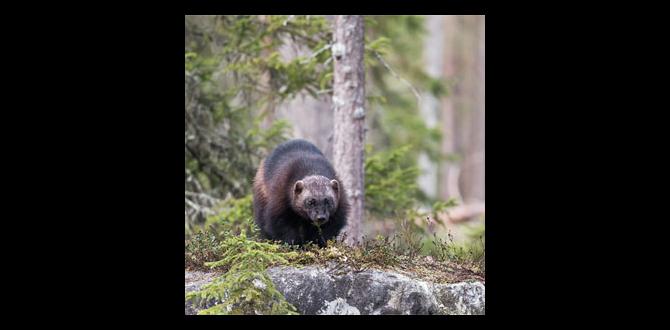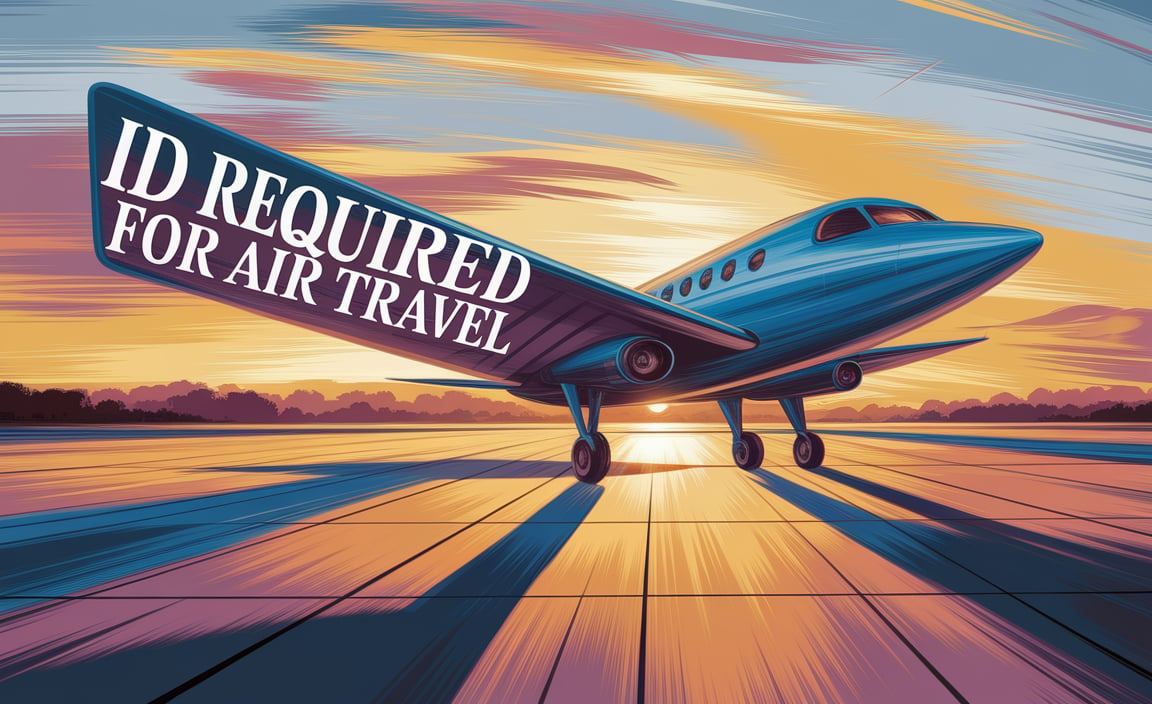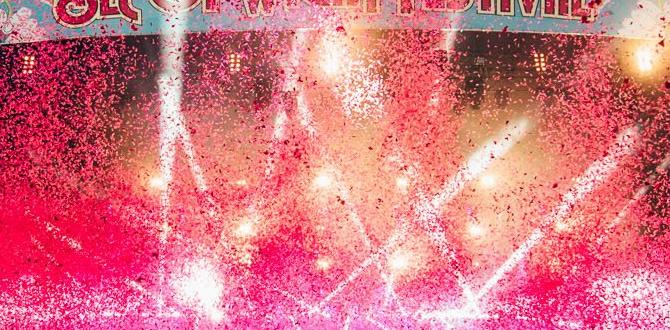This Bolivia 2 weeks itinerary offers an essential adventure, hitting the Salar de Uyuni, La Paz, and Sucre. It’s designed for first-time visitors, blending iconic sights with manageable travel for an unforgettable South American experience.
Planning your first big trip to South America can feel a bit overwhelming, right? Especially when countries like Bolivia pack so much incredible variety into one place. You want to see the amazing salt flats, explore vibrant cities, and maybe even push your comfort zone a little.
But how do you fit it all into just two weeks without feeling like you’re constantly rushing? It’s a common travel puzzle! Don’t worry, we’ve put together a straightforward plan that balances iconic must-sees with practical travel advice. Get ready for an adventure that’s both breathtaking and perfectly manageable.
Your Epic Bolivia 2 Weeks Itinerary: The Essential Adventure
Bolivia is a land of dramatic contrasts, from the world’s largest salt flat to the highest capital city. A two-week trip is a fantastic amount of time to get a real taste of its magic without feeling rushed. This itinerary focuses on the highlights, ensuring you experience the most iconic landscapes and cultural hubs. We’ve kept travel times in mind, suggesting ways to maximize your experience and minimize transit stress. Think of this as your launchpad for an unforgettable journey.
Why This Itinerary Works for Beginners
This plan is built for ease and impact. We’re covering the absolute must-sees for a first-time visitor to Bolivia within a two-week timeframe. This means:
- Logical Flow: We move from south to north (or vice-versa, depending on your starting point), minimizing backtracking.
- Key Destinations: You’ll experience the shimmering Salar de Uyuni, the bustling capital of La Paz, and the charming colonial city of Sucre.
- Travel Essentials: We touch upon how to navigate between places, get around cities, and manage altitude.
- Comfort Considerations: Because travel should be about enjoyment, we’ll subtly weave in tips for staying comfortable, which is key throughout Bolivia.
Getting to Bolivia: Your Starting Point
Most international travelers arrive in Bolivia via its major airports. The two most common entry points for this itinerary are:
- Viru Viru International Airport (VVI) in Santa Cruz: A common entry point, especially if coming from other South American countries. You’ll likely fly into La Paz (LPB) from here.
- El Alto International Airport (LPB) in La Paz: Directly accessible by international flights and a convenient starting point for this itinerary.
For this itinerary, we’ll assume you’re starting in La Paz.
Bolivia 2 Weeks Itinerary: Day-by-Day Breakdown
This itinerary balances adventure with time to soak in the unique atmosphere of each location. Remember to factor in travel time between destinations. Bolivia’s roads can be… an experience! Buses are common, but flights can save significant time, especially between major cities.
Days 1-3: La Paz & Surrounds – Altitude and Amazement
Arrive in La Paz, the world’s highest administrative capital. Given its significant altitude (around 3,650 meters / 11,975 feet), take it easy on your first day. Hydrate constantly, avoid alcohol, and move slowly.
Day 1: Arrival and Acclimatization
- Arrive at El Alto International Airport (LPB).
- Take a taxi or pre-booked shuttle to your hotel in La Paz (consider areas like Sopocachi or El Centro for good access).
- Check into your accommodation.
- Take a gentle walk around your neighborhood, find a local cafe, and sip some coca tea. This is crucial for altitude sickness.
- Enjoy a light dinner.
Day 2: Exploring La Paz
- Morning: Ride the Mi Teleférico (Cable Car System). This is an absolute must! It offers breathtaking views of the city and is an excellent way to get around without strenuous walking at altitude. Ride different lines to see various perspectives.
- Afternoon: Wander through the Witches’ Market (Mercado de las Brujas) for unique souvenirs and a glimpse into local beliefs. Explore the historic Plaza Murillo and admire the Metropolitan Cathedral and Presidential Palace.
- Evening: Enjoy dinner in the vibrant Sopocachi district, known for its excellent restaurants.
Day 3: Tiwanaku Ruins or Valle de la Luna
- Option 1 (History Buffs): Take a day trip to the ancient ruins of Tiwanaku, a pre-Inca civilization. It’s a UNESCO World Heritage site and a significant archaeological marvel. Tours usually take a full day and include transportation. Learn more about Tiwanaku’s history on the UNESCO World Heritage Centre website.
- Option 2 (Nature Lovers): Visit the Moon Valley (Valle de la Luna), a surreal landscape of clay formations sculpted by erosion. It’s a short taxi ride from the city center and offers fantastic photo opportunities and a light hike.
Days 4-7: The Salar de Uyuni – A Surreal Wonderland
This is likely the highlight for many! A 3-day/2-night tour is the most popular and practical way to see the Salar and its surrounding attractions.
Day 4: Travel to Uyuni & Tour Start
- Morning: Fly from La Paz (LPB) to Uyuni (UYU). This is highly recommended to save a full day of travel. Book flights in advance.
- Afternoon: Arrive in Uyuni, a rustic frontier town. You’ll typically meet your tour operator and group.
- Tour Begins: Visit the Train Cemetery just outside Uyuni. Then, head onto the vast Salar de Uyuni! Experience the dizzying perspective photos, visit Isla Incahuasi (Fish Island) with its giant cacti, and witness a spectacular sunset over the salt flats.
- Accommodation: Stay in a salt hotel on the edge of the Salar for a unique experience.
Day 5: Southwest Altiplano Wonders
- Explore the Eduardo Avaroa Andean Fauna National Reserve.
- Visit the stunning multi-colored lagoons like Laguna Colorada (Red Lagoon), famous for its flamingos.
- See geysers at Sol de Mañana (Morning Sun) and hot springs like Termas de Polques.
- Marvel at rock formations like Árbol de Piedra (Stone Tree).
- Accommodation: Basic hostels or refugios in the national park. Bring warm layers!
Day 6: Laguna Verde & Return to Uyuni
- Visit Laguna Verde (Green Lagoon) at the foot of Volcán Licancabur, often displaying vibrant green hues.
- On the drive back, you’ll see more unique landscapes and wildlife.
- Arrive back in Uyuni in the late afternoon/early evening.
- Evening: Overnight in Uyuni town.
Day 7: Travel to Sucre
- Morning: Take a bus from Uyuni to Sucre. This is a long journey (approx. 8-10 hours), but scenic. Alternatively, you can fly from Uyuni to La Paz and then to Sucre if time is of the essence and budget allows.
- Evening: Arrive in Sucre, Bolivia’s constitutional capital, known as the “White City.” Check into your hotel and enjoy a relaxed evening.
Days 8-10: Sucre – The White City and Dinosaur Footprints
Sucre is a UNESCO World Heritage city, famous for its well-preserved colonial architecture and relaxed atmosphere. It’s also a great place to practice Spanish!
Day 8: Discovering Sucre’s Charm
- Morning: Explore the historic city center. Visit the Plaza 25 de Mayo, the Metropolitan Cathedral, and the Casa de la Libertad (House of Freedom), where Bolivia’s declaration of independence was signed.
- Afternoon: Climb to the viewpoint of La Recoleta for panoramic views of the city and its white-domed churches. Wander through the charming cobblestone streets.
- Evening: Enjoy Sucre’s culinary scene. The city is known for its delicious and affordable food.
Day 9: Dinosaur Footprints & Local Crafts
- Morning: Visit the Cal Orck’o paleontological park, home to an astonishing number of dinosaur footprints from the Cretaceous period. This is one of the largest sites globally for these tracks. Check National Geographic for more on this incredible find.
- Afternoon: Explore the Tarabuko indigenous market (Sundays only, but the area is accessible any day) or visit local artisan workshops for textiles and crafts.
- Evening: Relax and enjoy your last evening in Sucre.
Day 10: Day Trip to Potosí or Relax
- Option 1 (History & Mines): Take a day trip to Potosí (about 3 hours one-way by bus). Visit the famous Cerro Rico mountain and take a guided tour of the Potosí silver mines. This can be a confronting but eye-opening experience. It’s essential to go with a reputable, ethical tour operator.
- Option 2 (Relaxation): Enjoy a slower pace in Sucre. Visit more museums, enjoy the local cafes, or simply wander and absorb the city’s beauty.
Days 11-13: Return to La Paz & Final Explorations
It’s time to head back towards La Paz for your departure. You can fly or take an overnight bus.
Day 11: Travel Back to La Paz
- Morning: Fly from Sucre (SRE) to La Paz (LPB). This is the quickest option (approx. 45 minutes flight time).
- Afternoon: Arrive in La Paz. Check back into your hotel.
- Optional: Visit the Mercado de las Brujas if you missed it or want to buy souvenirs. You could also explore the El Alto market if your visit aligns with a Sunday (though it’s only massive on Thursdays and Sundays).
Day 12: Day Trip to the Death Road (Optional Adventure)
- For adrenaline seekers, consider a guided mountain biking tour down the Yungas Road, famously known as the “Death Road.” This is usually a full-day activity and requires good physical condition. Ensure you book with a reputable company that prioritizes safety.
- Alternatively, explore the Jaén Street museums or relax before your departure.
Day 13: Last Bites and Souvenirs
- Enjoy a final Bolivian breakfast or lunch.
- Do any last-minute souvenir shopping.
- Consider a different Mi Teleférico line you might have missed.
- Prepare for your departure.
Day 14: Departure
Morning: Enjoy a final Bolivian breakfast.
Departure: Head to El Alto International Airport (LPB) for your onward flight.
Navigating Bolivia: Essential Travel Tips
Bolivia can be an adventure to navigate. Here are some practical tips to make your journey smoother and more comfortable.
Altitude Sickness
This is no joke. La Paz is at a very high altitude.
- Acclimatize: Spend your first day in La Paz resting.
- Hydrate: Drink plenty of water.
- Coca Tea: It’s a traditional remedy and helps many people.
- Avoid Alcohol & Heavy Meals: Especially on your first few days.
- Medication: Consult your doctor about Diamox (acetazolamide) or other preventative measures.
- Listen to Your Body: If symptoms worsen (severe headache, nausea, dizziness), descend to a lower altitude or seek medical advice.
For more on managing altitude, the CDC’s Travelers’ Health pages offer excellent guidance.
Transportation
Buses: The most common and affordable way to travel between cities. Tourist-oriented companies offer more comfortable seats and safety. Book tickets a day or two in advance where possible.
Flights: Bolivia has a national airline (Boliviana de Aviación – BoA) and EcoJet. Flying saves significant time but is more expensive. Book in advance, especially for popular routes.
Taxis: In cities, agree on a price before your journey. Official taxis are generally safer.
Mi Teleférico (La Paz): A marvel of urban transport. Use it to get around La Paz efficiently and enjoy the views.
Accommodation
Options range from budget hostels and guesthouses to mid-range hotels and a few more upscale choices in major cities. In remote areas like the Salar tour, accommodation is basic.
Food and Drink
Bolivian food is hearty and delicious. Empanadas, salteñas, llapingachos, and anticuchos are popular.
- Water: ONLY drink bottled or purified water. Avoid tap water and ice unless you’re sure it’s purified.
- Street Food: Exercise caution. Stick to busy stalls where food turnover is high.
Don’t forget to try some local Pisco sour! For those who require them, carrying adult diapers or incontinence products can offer peace of mind for long journeys or when access to facilities might be uncertain.
Language
Spanish is the official language. While English is spoken in some tourist establishments, learning a few basic Spanish phrases will go a long way.
Money
The currency is the Boliviano (BOB). ATMs are available in cities, but carry cash for smaller towns and for your Salar tour. Credit card acceptance is limited outside of larger hotels and restaurants.
What to Pack for Your Bolivia Adventure
Packing smartly is key to enjoying your trip, especially considering Bolivia’s diverse climates and altitudes. Layers are your best friend!
Essential Clothing
- Thermal Layers: Tops and bottoms for cold nights and high altitudes.
- Fleece/Warm Jacket: Crucial for the Salar de Uyuni and evenings in La Paz.
- Waterproof/Windproof Outer Shell: For unpredictable weather.
- Comfortable Trousers: Hiking pants or sturdy jeans.
- T-shirts/Long-Sleeve Shirts: For warmer days and layering.
- Hat: A warm beanie for cold, and a straw hat or cap for sun protection.
- Gloves: Essential for very cold conditions, especially in Uyuni.
- Scarf/Neck Gaiter: Protects against dust and cold.
- Comfortable Walking Shoes/Hiking Boots: You’ll be doing a lot of exploring.
- Sandals/Flip-flops: For relaxing in hostels or hotels.
Health and Comfort Items
- Sunscreen: High SPF, the sun is intense at altitude.
- Lip Balm with SPF: Protects against sun and dry air.
- Insect Repellent: Especially for lower-lying areas or if venturing into the Amazon.
- Hand Sanitizer: Always useful when traveling.
- Basic First-Aid Kit: Including pain relievers, bandages, and any personal medications.
- Altitude Sickness medication: If prescribed by your doctor.
- Toiletries: Travel-sized is best.
- Travel Towel: Quick-drying and useful in basic accommodations.
- Reusable Water Bottle: Stay hydrated and reduce plastic waste.
- For Parents: Consider discreet, child diapers for easier travel, especially on long bus rides or when facilities are scarce.
Other Essentials
- Backpack: A comfortable daypack for daily excursions.





